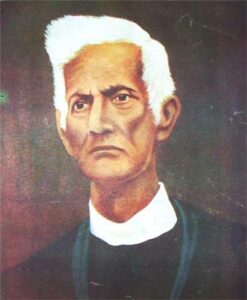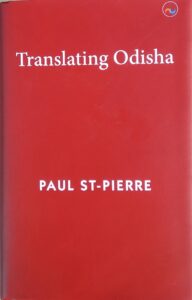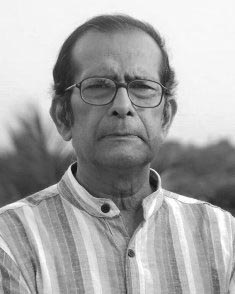Bhaskar Parichha
If translation studies in India are in an embryonic stage, it is more so in Odisha. Although an evolving discipline, Odisha has, fortuitously, a reasonable share of works translated into English. In the last five decades, quite a number of Odia masterpieces have been rendered into English – and with a sort of vengeance!
Publishers like Four Corners, Grassroots, Orient Longman, Oxford University Press, University of California Press, Faber & Faber, Rupantar, Lark Books, Disha Books, Macmillan, Harper Collins, Aleph books, Publications Division, National Book Trust and, last but not least, Kendriya Sahitya Akademi and a few other discernible publishers come to mind when talking about translating the enormous literary creations in Odia.

From sometime around the 1950s to the end of the present decade, a number of Odia classics have been translated. For example, Umesh Chandra Sarkar’s ‘Padmamali’, Fakir Mohan Senapati’s ‘Chhamaana Aathaguntha’ (Six Acres and a Third), Kalindi Charan Panigrahi’s ‘Matira Manisha’ (A House Undivided) Gopinath Mohanty’s ‘Paraja’, Harihar Mahapatra’s ‘My Life, My Work’, Laxmikanta Mohapatra’s ‘Kanamamu’(One-eyed Uncle) and Chandrasekhar Rath’s ‘Yantrarudha’ (Astride the Wheel) – only to mention a few.
The present book ‘Translating Odisha’ (Dhauli Books) by Paul St-Pierre, as the blurb says, ‘brings together all of Prof. St-Pierre’s writings on Odisha presented at conferences and published in journals over more than twenty years.’ Arranged chronologically in each segment from 1996 to 2019, the book gives an overview of all that has been accomplished in the realm of translation.

Prof. St-Pierre taught in translation programs in Canada for more than twenty-five years and served as president of both the Canadian Association of Translation Studies and the Canadian Association of Schools of Translation. Trained in the field of Translation Studies, and formerly a professor of translation at Montreal University, Prof Pierre has taken a keen and personal interest in Odia literature and culture. What is interesting to note is that he has been visiting Odisha at least once a year since 1993, and, in the course of these trips, he has collaborated on numerous translations of literary texts. That extensive collaboration has resulted in this attractive digest.
His partnership with, notably, Kamala Kanta Mohapatra and Leelawati Mohapatra, R.S. Mishra, S.P. Mohanty, J.K. Nayak, D.R. Pattanaik, B.K. Tripathy, Himansu Mohapatra, and others have rather been eventful as far as the translation of Odia masterpieces goes.
As Prof. Pierre writes in the prelude to this anthology, ‘rather than an objective history of the development of the field as a whole, this is meant to be an experiential and autobiographical chronicle that will have an interest beyond what is purely a personal narrative.’

Dedicated to the late Ganeswar Mishra – with whom the author had an enduring relationship – the volume is divided into seven meticulous sections. The first section provides an insight into the author’s training and his approach to translation. The second section includes articles on translation relating specifically to Odisha. The third one showcases writings on issues that rose more generally by the act of translation while the fourth section contains six analyses of translations of the writings of Fakir Mohan Senapati – the patriarch of modern Odia literature.
The fifth section deals with the five introductions to collections of writings by Jagannath Prasad Das. While the sixth part contains fourteen short occasional pieces on different aspects of Odia literature and culture, the seventh and final section lists the forty-four translations from Odia published in national, international, and local editions, on which the author has worked in alliance with various other translators. Although not forming the core of the collection, there are numerous references that are extremely useful and can possibly serve as primary allusions for further studies. Appreciably, there are plentiful suggestions to the historical evolution of Odisha and its literary-cultural development over the past two centuries.

Additionally, the hardbound book is a robust reference guide as far as the theme and the state of Odisha goes. The bibliography contains more than five thousand translated works published within a time frame of more than two hundred years – the first printed translation of any Odia work being the one in 1807 published at the Serampore Press. Unquestionably, this book is an elaborative attempt in coalescing all that has been rendered into English and well-structured work. Surely, Prof. Pierre has done a yeoman’s service to Odia literature with this anthology. In a constricted sense, this volume also traces the history of vernacular publishers and their contribution to the escalation of the masterly works.
Running into more than four hundred pages and very well produced at par with mainstream publishers, ‘Translating Odisha’ is a tour de force and a laudable work to be undertaken on any regional literature of India. The collection will be of considerable interest to teachers, scholars, researchers, and students of literature and translation studies in India and abroad.
‘Translating Odisha’
Paul St-Pierre
Dhauli Books, Bhubaneswar
ISBN 9789389382129
Rs 995/ 29.95 Euros






















